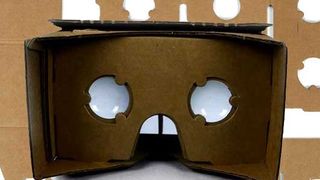Google just showed how serious it is about Cardboard
This virtual reality viewer ain't going away

The joke seemed to be on Google when it passed out Cardboard, a virtual reality headset literally made of cardboard, at last year's IO conference.
But today, the Google Glass maker showed it's quite serious about the headset by announcing updates for users, developers and makers alike. Oh, and it just happened to let slip that there are over half a million Cardboard "viewers," as it calls it, in people's hands.
Google said it has been "working to improve" Cardboard ever since it was announced. Part of those improvements now include a dedicated collection page on Google Play for Cardboard apps.
The pedigree of these apps is none too shabby; you can sit in on a Paul McCartney concert, tour the Hobbit's Shire and take a test drive. The standalone Cardboard app also received an update.
Finally, users can now score a Cardboard viewer from a number of sources, including DODOcase, I Am Cardboard, Knoxlabs and Unofficial Cardboard. Google also released some new specs for the headset in case you're inclined to build your own.
But wait
The user goodies stop there, but developers can now access Cardboard SDKs for Android and Unity. Google said the SDKs will simplify common VR development tasks so devs can focus on creating apps, not troubleshooting.
Google is out with new building specs for Cardboard, this time focusing on specific cutting methods (from lasers to die-cutting to single-blade sheering). Due next year, Google will release a viewer calibration tool to the Cardboard SDK so Cardboard creators can set things like viewer's base and focal length. All Cardboard applications will then adjust to fit the viewing settings.
Get daily insight, inspiration and deals in your inbox
Get the hottest deals available in your inbox plus news, reviews, opinion, analysis and more from the TechRadar team.
To top it off, Google is hiring for roles in Cardboard and virtual reality and is "working on a few projects ourselves," promising there's more to come.
- We think Cardboard is due for some Google IO 2015 love
Michelle was previously a news editor at TechRadar, leading consumer tech news and reviews. Michelle is now a Content Strategist at Facebook. A versatile, highly effective content writer and skilled editor with a keen eye for detail, Michelle is a collaborative problem solver and covered everything from smartwatches and microprocessors to VR and self-driving cars.
Most Popular



